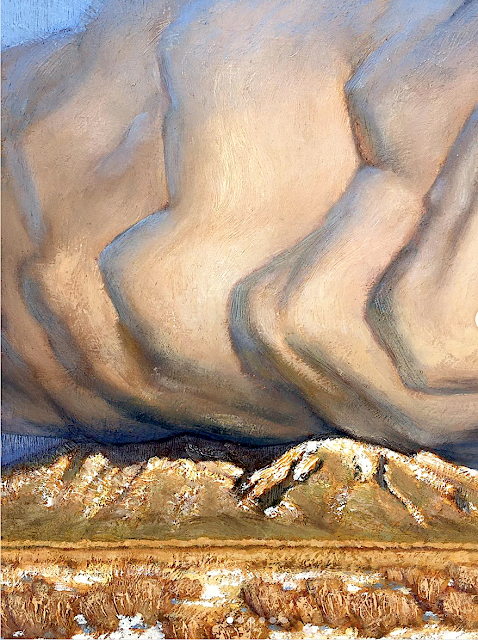%20Sunset%20on%20Mount%20Diablo%20(Marin%20Sunset)(1877)%20Oil%20on%20canvas,%20100.7%20cm%20x%20151.5%20cm.%20Cantor%20Arts%20Center,%20Stanford%20University,%20Palo%20Alto%20CA.jpg)
Mont Diablo (1 ,173m - 3,648 ft)
Etats-Unis (Californie)
Cantor Arts Center, Stanford University, Palo Alto CA
Le peintre
William Keith était un peintre américano-
écossais célèbre pour ses paysages californiens. Il est associé au
tonalisme et à l'Ecole de Barbizon. Bien que la majeure partie de sa
carrière se soit déroulée en Californie, il a c effectué deux longs
voyages d'études en Europe et a eu un studio à Boston en 1871-72 et un à
New York en 1880.
Dans les années 1870, Keith est arrivé en
Californie, dans la vallée de Yosemite, avec une lettre de
recommandation auprès de John Muir. Les deux hommes sont devenus de
grands amis et cette amitié a perduré les 38 années du reste de leur vie
. Tous deux étaient nés en Écosse la même année et partageaient un
amour pour les montagnes de Californie. James Mitchell Clarke a décrit
leur amitié comme une amitié "dans laquelle une affection et une
admiration profondes s'exprimaient à travers une sorte de joute verbale,
permanente ".
Au cours des années 1870, Keith a peint un certain
nombre de grandes œuvres panoramiques dont Kings River Canyon (Oakland
Museum) et California Alps (Mission Inn, Riverside). Ces oeuvre
voulaient directement rivaliser avec celles de sujet similaires peint
par Albert Bierstadt ou Thomas Hill.
"Mes images sont celles qui
viennent de l'intérieur.de moi. Je ressens une émotion et je peins
immédiatement une image qui l'exprime. Le sentiment est la valeur
réelle dans mes images, et seules quelques personnes comprennent cela.
Quiconque sait utiliser de la peinture et des pinceaux peut peindre une
vraie scène de la nature - c'est une image objective. Mais pour un
artiste digne de ce nom, tout doit cela doit venir de l'intérieur de
lui même " .
La montagne
Le mont Diablo (1 ,173m - 3,648 ft) est une montagne située dans le comté de Contra Costa dans la région urbaine de San Francisco, au sud de la ville de Clayton et au nord-ouest de Danville. Ce sommet isolé est visible de l'ensemble de la baie de San Francisco et de nombreux endroits de la Californie du Nord. Le mont Diablo ressemble à une double pyramide sous de nombreux angles, et inclut plusieurs sommets secondaires, le plus important et le plus proche étant celui de l'autre moitié de ladite double pyramide, North Peak. Le sommet du mont Diablo est accessible aux véhicules motorisés, randonneurs ou cyclistes. Par temps clair, il est possible du sommet d'apercevoir le massif montagneux de la Sierra Nevada et la montagne de l'extrémité sud de la chaîne des Cascades, le volcan du pic Lassen, à environ 290 kilomètres. Le mont Shasta reste invisible du fait de la courbure terrestre, mais le Half Dome du parc national de Yosemite est lui visible par temps exceptionnellement clair grâce à un télescope.
_________________________________________
2022 - Wandering Vertexes ....
Errant au-dessus des Sommets Silencieux...
Un blog de Francis Rousseau
%20Sunset,%20Canyon%20de%20Chelly%20(1916)%20Oil%20on%20canvas,%2071.1%20x%2081.3%20cm.%20Private%20Collection%20.jpg)

--The%20Narrows-%20sY%20jOHN4S%20nEwfoundland%2045%20x%2060,%205%20Huil%20sur%20oile-%20Docnation%20Sobey%20.jpg)
%20-The%20Ramparts,%20Tonquin%20Valley,%20Rocky%20Mountains%20Huile%20sur%20panneau27,%201x%2035,%205cm-%20Fondation%20Sobey%20.jpg)
-%20Casthill%20Mountain%20House%20,%20The%204%20elements%201843-44.png)












